Mobile Emergency Power Source Configuration Scheme considering Dynamic Characteristics of a Transportation Network
Abstract
:1. Introduction
- First, as mentioned above, urban power grids and transportation networks are closely coupled, so MEPSs need to reach the fault location through the urban transportation network shown in Figure 2. However, when extreme weather occurs, it will affect the urban transportation network, such as cold tide weather leading to road icing, which makes it difficult for MEPS to reach the destination quickly. In addition, some static traffic planning methods are not optimal because they ignore the real-time traffic conditions and dynamic traffic flow.
- Secondly, the traditional path selection and determination algorithm, such as the Dijkstra algorithm and Warshall–Floyd algorithm, are still limited by the solution speed, which limits the online application. For urban traffic networks, there is an urgent need for an efficient path determination algorithm.
2. The Determination of Optimal Route in an Urban Transportation Network
2.1. The Definition and Mathematical Model of DRTI
2.2. The Determination of Traffic Flow Ci
2.3. The Introduction of A-Star Algorithm
- When the vertex i and vertex j coincide, the weight matrix aij can be expressed as Equation (11).
- 2.
- When the vertex i and vertex j do not coincide and there are associated edges between them, the weight matrix aij can be expressed as Equation (12).
- 3.
- When the vertex i and j do not coincide and there is no associated edge between them, the weight matrix aij can be expressed as Equation (13).
3. The Optimal Installation Location of MEPS in a Power Grid
4. Case Study
4.1. The Accuracy of WNN
4.2. The Feasiblity of AS Algorithm
4.3. The Determination of the MEPS’s Location
5. Conclusions
Author Contributions
Funding
Conflicts of Interest
Nomenclature
| vsi | The starting point of the i-th road |
| vei | The ending point of the i-th road |
| tei | The time to reach the ending point of the i-th road |
| tsi | The time to start from the starting point of the i-th road |
| Ci | The traffic flow of the i-th road |
| A basic wavelet function | |
| The size of translation transform, also named as translation factor | |
| a | The size of scale transform, also named as scale factor |
| x(t) | The inner product function |
| M | The number of hidden nodes |
| ui | Input of the i-th node in hidden layer |
| hi | Output of the i-th node in hidden layer |
| The prediction output of the WNN’s output layer | |
| R | The regular term constrained on the weight matrix W and C |
| P(i) | The comprehensive priority of vertex i |
| f(i) | The forward priority of vertex I, |
| b(i) | The backward priority of vertex i |
| k | Iteration times |
| Power loss of branch connected nodes i and j | |
| Active power, reactive power, and load power of node j | |
| The sum of active power, reactive power, and load power of all branches | |
| The resistance and reactance of the branch connected nodes i and j | |
| Vj | The voltage of node j |
| Sij | The power from node i to node j |
| Longitudinal and transverse component of voltage drop of branch connected nodes i and j | |
| Active power and reactive power from node i to node j | |
| gi,j | The conductance of branch i to j |
References
- Panteli, M.; Trakas, D.N.; Mancarella, P.; Hatziargyriou, N.D. Boosting the Power Grid Resilience to Extreme Weather Events Using Defensive Islanding. IEEE Trans. Smart Grid 2016, 7, 2913–2922. [Google Scholar] [CrossRef]
- Dong, L.; Wang, C.; Li, M.; Sun, K.; Chen, T.; Sun, Y. User Decision-based Analysis of Urban Electric Vehicle Loads. CSEE J. Power Energy Syst. 2021, 7, 190–200. [Google Scholar]
- Mohamed, M.A.; Chen, T.; Su, W.; Jin, T. Proactive Resilience of Power Systems Against Natural Disasters: A Literature Review. IEEE Access 2019, 7, 163778–163795. [Google Scholar] [CrossRef]
- Pearson, J.; Wagner, T.; Delorit, J.; Schuldt, S. Meeting Temporary Facility Energy Demand with Climate-Optimized Off-Grid Energy Systems. IEEE Open Access J. Power Energy 2020, 7, 203–211. [Google Scholar] [CrossRef]
- Yang, Y.; Tang, W.; Liu, Y.; Xin, Y.; Wu, Q. Quantitative Resilience Assessment for Power Transmission Systems Under Typhoon Weather. IEEE Access 2018, 6, 40747–40756. [Google Scholar] [CrossRef]
- Ding, T.; Qu, M.; Wang, Z.; Chen, B.; Chen, C.; Shahidehpour, M. Power System Resilience Enhancement in Typhoons Using a Three-Stage Day-Ahead Unit Commitment. IEEE Trans. Smart Grid 2021, 12, 2153–2164. [Google Scholar] [CrossRef]
- Liu, X. A Planning-Oriented Resilience Assessment Framework for Transmission Systems Under Typhoon Disasters. IEEE Trans. Smart Grid 2020, 11, 5431–5441. [Google Scholar] [CrossRef]
- Liu, Y.; Li, J.; Wu, L. Coordinated Optimal Network Reconfiguration and Voltage Regulator/DER Control for Unbalanced Distribution Systems. IEEE Trans. Smart Grid 2019, 10, 2912–2922. [Google Scholar] [CrossRef]
- Zheng, W.; Huang, W.; Hill, D.J.; Hou, Y. An Adaptive Distributionally Robust Model for Three-Phase Distribution Network Reconfiguration. IEEE Trans. Smart Grid 2021, 12, 1224–1237. [Google Scholar] [CrossRef]
- Anagnostatos, S.D.; Halevidis, C.D.; Polykrati, A.D.; Koufakis, E.I.; Bourkas, P.D. High-Voltage Lines in Fire Environment. IEEE Trans. Power Deliv. 2011, 26, 2053–2054. [Google Scholar] [CrossRef]
- Zhou, B.; Xu, D.; Li, C.; Cao, Y.; Chan, K.; Xu, Y.; Cao, M. Multi-objective Generation Portfolio of Hybrid Energy Generating Station for Mobile Emergency Power Supplies. IEEE Trans. Smart Grid 2018, 9, 5786–5797. [Google Scholar] [CrossRef]
- Xu, Y.; Wang, Y.; He, J.; Su, M.; Ni, P. Resilience-Oriented Distribution System Restoration Considering Mobile Emergency Resource Dispatch in Transportation System. IEEE Access 2019, 7, 73899–73912. [Google Scholar] [CrossRef]
- Lei, S.; Chen, C.; Zhou, H.; Hou, Y. Routing and Scheduling of Mobile Power Sources for Distribution System Resilience Enhancement. IEEE Trans. Smart Grid. 2019, 10, 5650–5662. [Google Scholar] [CrossRef]
- Yang, Z.; Dehghanian, P.; Nazemi, M. Enhancing Seismic Resilience of Electric Power Distribution Systems with Mobile Power Sources. In Proceedings of the 2019 IEEE Industry Applications Society Annual Meeting, Baltimore, MD, USA, 29 September–3 October 2019; pp. 1–7. [Google Scholar]
- Erenoğlu, A.K.; Erdinç, O.; Sancar, S.; Catalão, J.P.S. Post-Event Resiliency-Driven Strategy Dispatching Mobile Power Sources Considering Transportation System Constraints. In Proceedings of the 2021 8th International Conference on Electrical and Electronics Engineering (ICEEE), Antalya, Turkey, 9–11 April 2021; pp. 161–167. [Google Scholar]
- Ye, H.; Chen, W.; Hu, Q.; Hao, W.; Wang, C.; Hou, K.; Jiang, X. A Voltage Control of Energy Storage Mobile Shelter Under Multi Energy Access. In Proceedings of the 2021 IEEE 4th International Electrical and Energy Conference (CIEEC), Wuhan, China, 28–30 May 2021; pp. 1–6. [Google Scholar]
- Erenoğlu, A.K.; Erdinç, O. Post-Event restoration strategy for coupled distribution-transportation system utilizing spatiotemporal flexibility of mobile emergency generator and mobile energy storage system. Electr. Power Syst. Res. 2021, 199, 378–386. [Google Scholar] [CrossRef]
- Wang, Y.; Xu, Y.; Li, J.; He, J.; Liu, J.; Zhang, Q. Dynamic load restoration considering the interdependencies between power distribution systems and urban transportation systems. CSEE J. Power Energy Syst. 2020, 6, 772–781. [Google Scholar]
- Zhu, S.; Hou, H.; Zhu, L.; Liang, Y.; Wei, R.; Huang, Y.; Zhang, Y. An optimization model of power emergency repair path under typhoon disaster. Energy Rep. 2021, 7, 204–209. [Google Scholar] [CrossRef]
- Sedgh, S.A.; Doostizadeh, M.; Aminifar, F.; Shahidehpour, M. Resilient-enhancing critical load restoration using mobile power sources with incomplete information. Sustain. Energy Grids Netw. 2021, 26, 104–113. [Google Scholar]
- Khan, M.A.; Uddin, M.N.; Rahman, M.A. A Novel Wavelet-Neural-Network-Based Robust Controller for IPM Motor Drives. IEEE Trans. Ind. Appl. 2013, 49, 2341–2351. [Google Scholar] [CrossRef]
- Shi, B.; Xu, L.; Meng, W. Applying a WNN-HMM Based Driver Model in Human Driver Simulation: Method and Test. IEEE Trans. Intell. Transp. Syst. 2018, 19, 3431–3438. [Google Scholar] [CrossRef]
- Song, Y.; Chen, Z.; Yuan, Z. New Chaotic PSO-Based Neural Network Predictive Control for Nonlinear Process. IEEE Trans. Neural Netw. 2007, 18, 595–601. [Google Scholar] [CrossRef] [PubMed]
- Liu, J.; Huang, J.; Sun, R.; Yu, H.; Xiao, R. Data Fusion for Multi-Source Sensors Using GA-PSO-BP Neural Network. IEEE Trans. Intell. Transp. Syst. 2021, 22, 6583–6598. [Google Scholar] [CrossRef]
- Marchesan, A.C.; Marconato, G.V.; Costa, L.M.A.; Gallas, M.R.; Ferri, C.B.; Cardoso, G. Performance analysis of forward/backward sweep power flow methods for radial distribution systems. In Proceedings of the 2018 Simposio Brasileiro de Sistemas Eletricos (SBSE), Niteroi, Brazil, 12–16 May 2018; pp. 1–6. [Google Scholar]
- Zimmerman, R.D.; Murillo-Sánchez, C.E.; Thomas, R.J. MATPOWER: Steady-State Operations, Planning, and Analysis Tools for Power Systems Research and Education. IEEE Trans. Power Syst. 2011, 26, 12–19. [Google Scholar] [CrossRef] [Green Version]

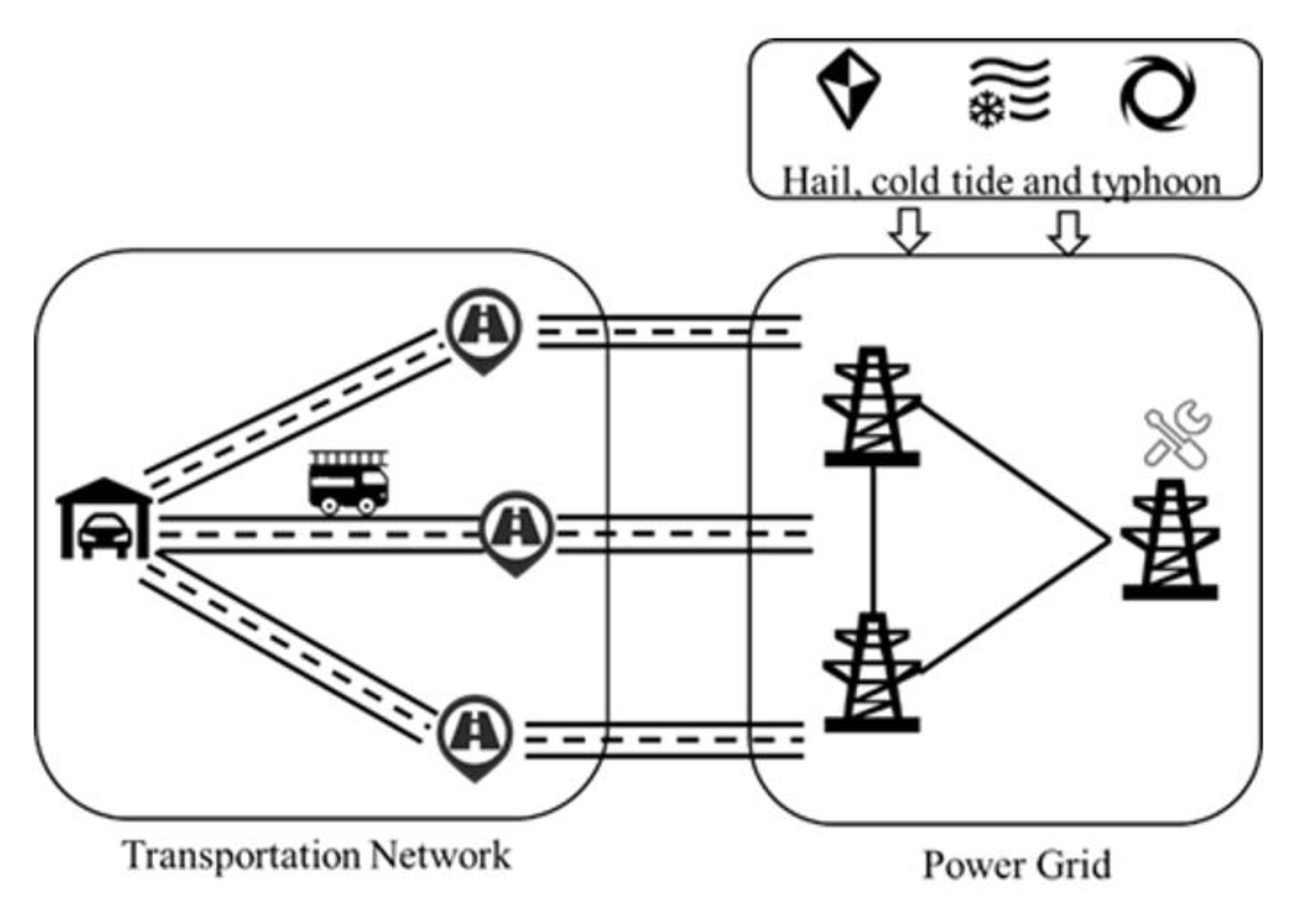



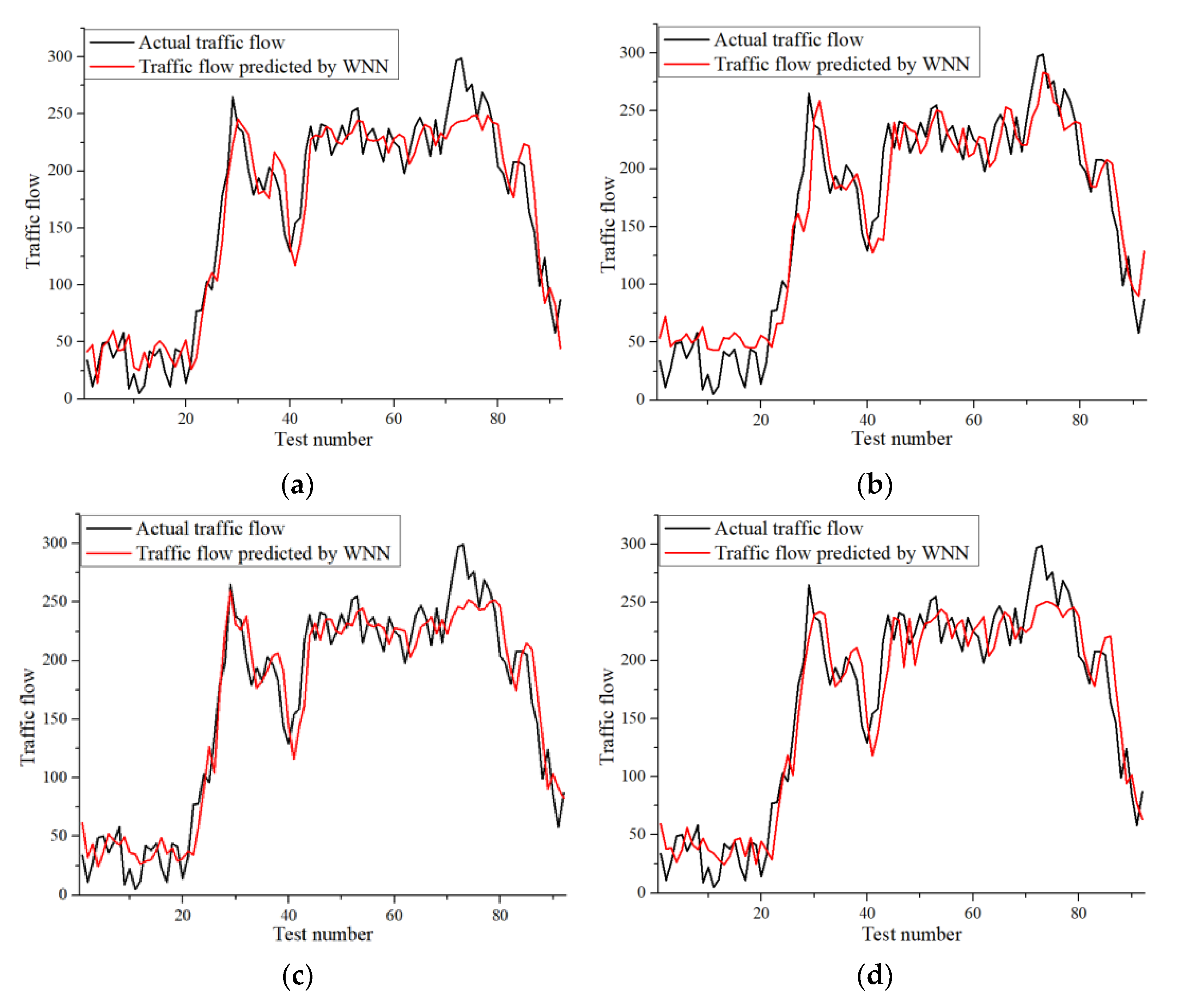
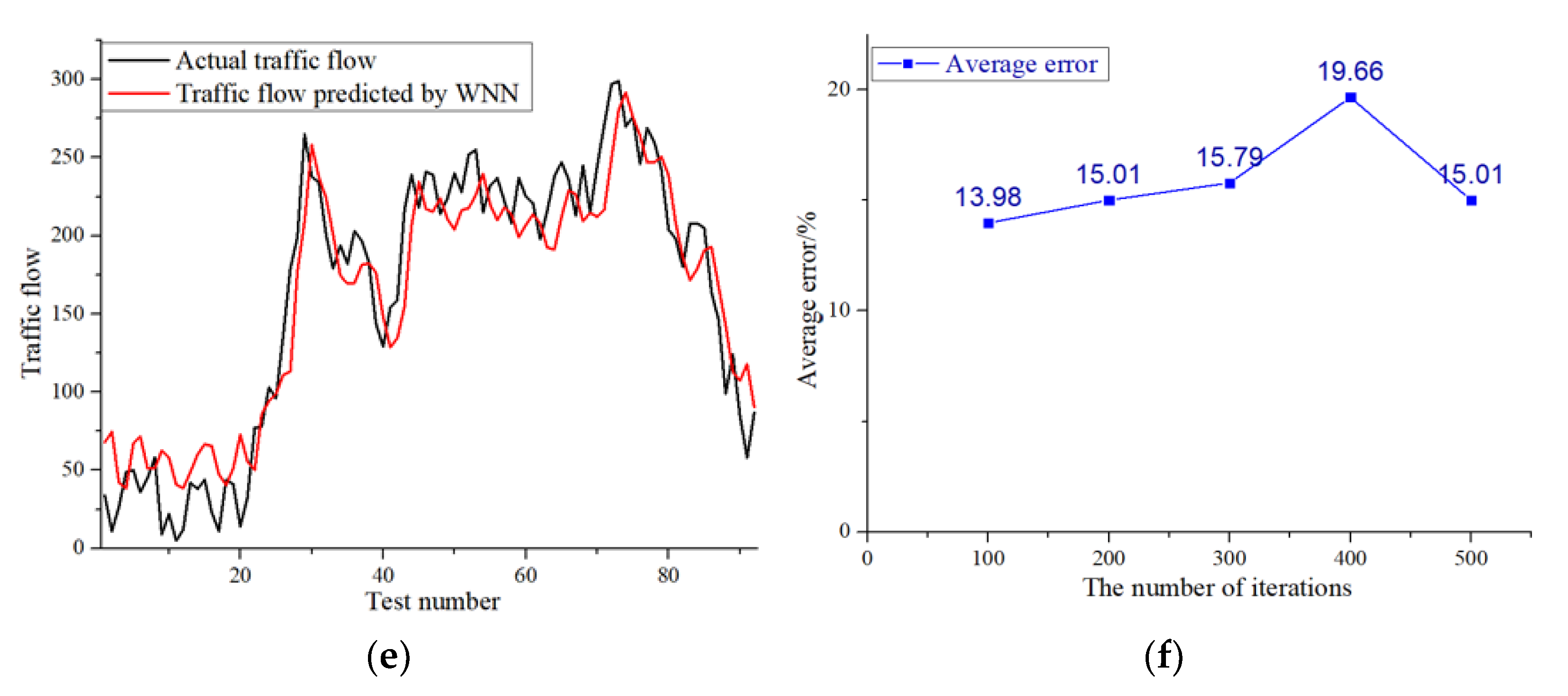
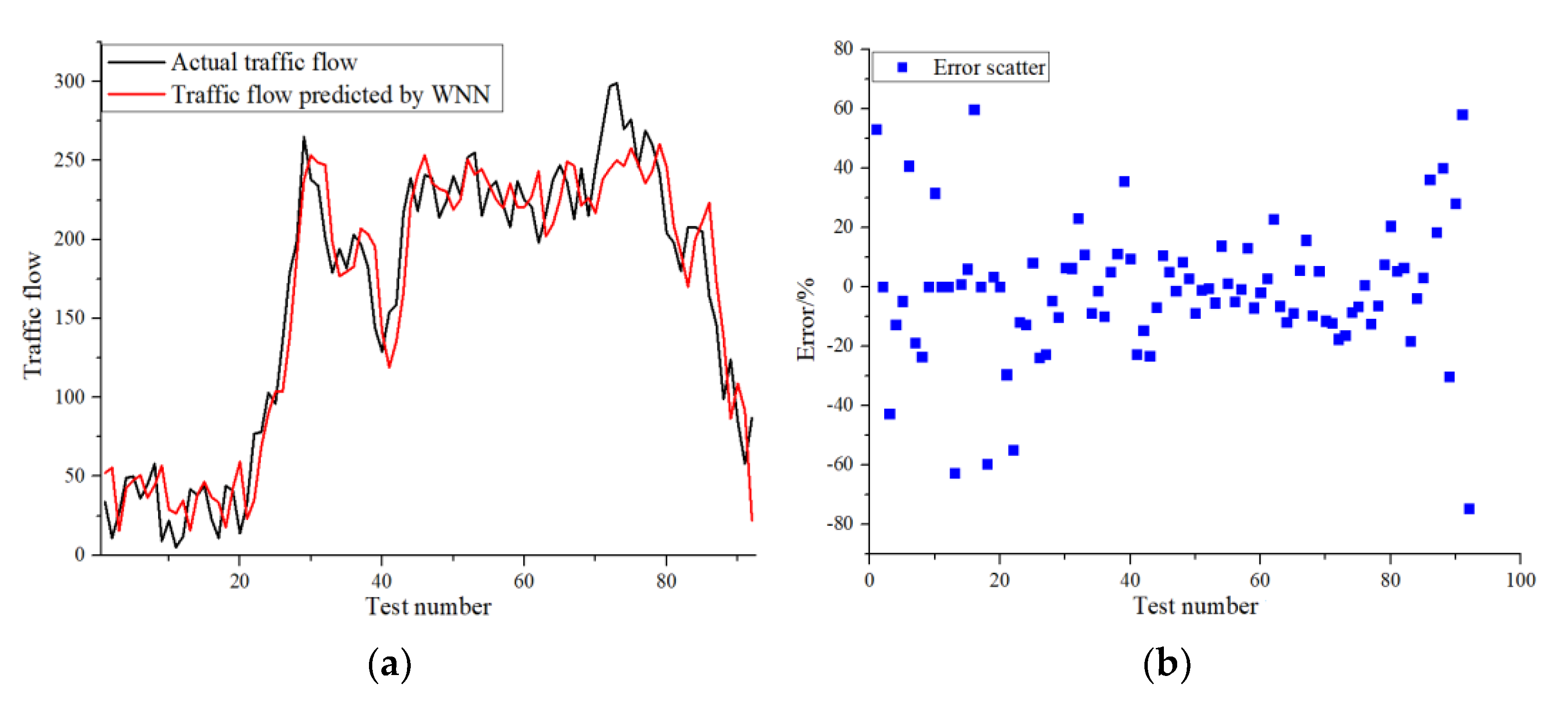
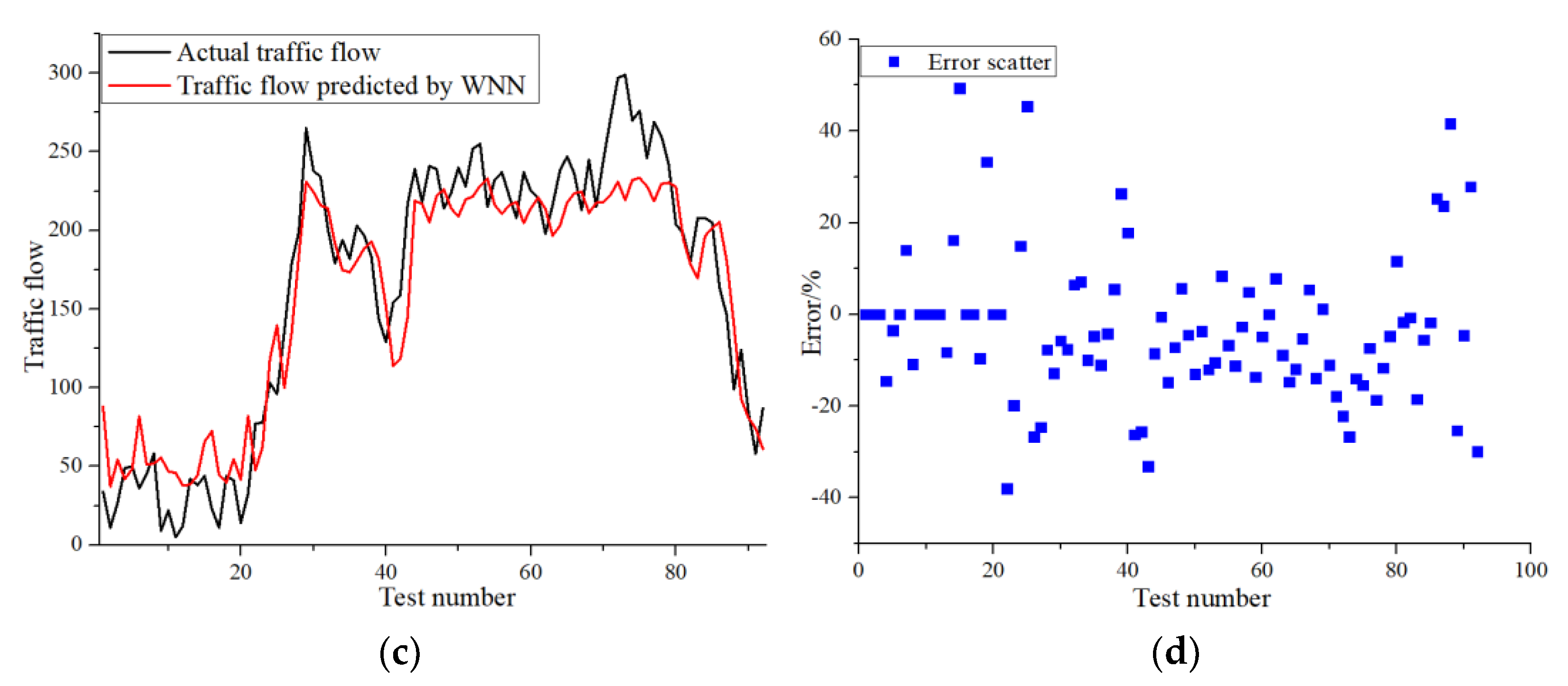

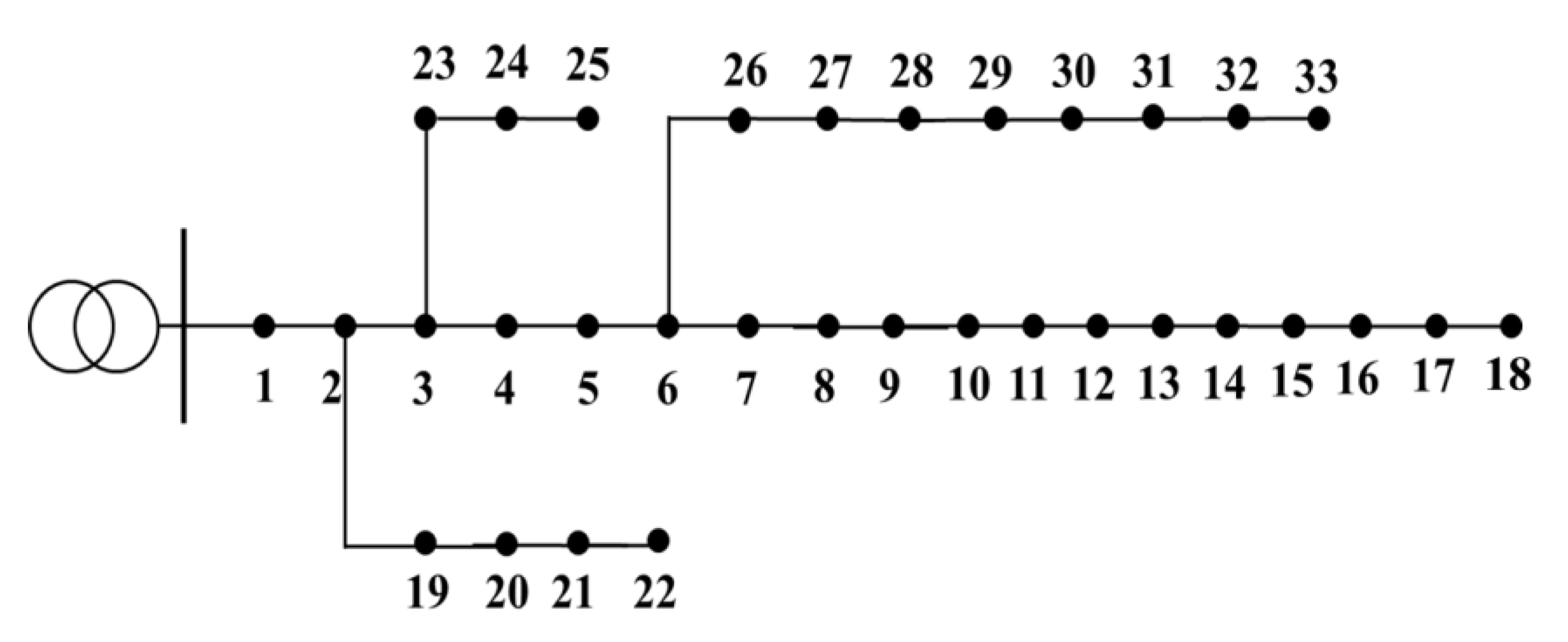

| References | Methods Adopted in the References |
|---|---|
| [14,15] | Two-stage restoration scheme is designed to facilitate the distribution system restoration following the high-impact low-probability (HILP) seismic disasters. |
| [16,17] | A post-event restoration framework for the distribution system in response to high impact low probable events is presented. |
| [18] | This paper proposes a service restoration method considering interdependency between the power distribution system and transportation system, which is formulated as a mixed-integer linear program (MILP). |
| [19] | This paper proposes an optimization model of a power emergency repair path under a typhoon disaster. It aims to deploy the repair team in advance, based on the advance prediction of the power outage. |
| [20] | This paper proposes a robust receding horizon recovery strategy that dispatches MEPSs and forms multiple microgrids (MGs) to maximize the restored critical loads (CLs). |
| Step 1 | Initialize open set 1 and close set 2; |
| Step 2 | Add starting vertex to the open set and set priority of starting vertex to 0, i.e., the highest priority; |
| Step 3 | If the open set is not empty, select the vertex n with the highest priority in set; |
| Step 3.1 | If vertex n is the ending vertex, the parent vertex is tracked gradually from the ending vertex n until it reaches the starting vertex; |
| Step 3.2 | Return the found result route, and the algorithm ends; |
| Step 4 | If vertex n is not the ending vertex, then remove vertex n from the open set and add it into the close set; |
| Step 4.1 | Traverse all neighbor vertexes of vertex n; |
| Step 4.1.1 | If the neighbor vertex m is in the close set, then skip vertex m and select the next neighbor vertex; |
| Step 4.1.2 | If the neighbor vertex m is not in the open set, then set the parent vertex of vertex m as vertex n, calculate the priority of vertex m and add it into the open set; |
| Step 5 | Repeat steps 2–4 until ending vertex is reached. |
| The Number of Transportation Networks | AS Algorithm | Dijkstra Algorithm | Warshall–Floyd Algorithm | |||
|---|---|---|---|---|---|---|
| Calculation Results | Calculation Time | Calculation Results | Calculation Time | Calculation Results | Calculation Time | |
| 1 | 1, 3, 6, 8 | 0.0526 s | 1, 2, 5, 8 | 1.2568 s | 1, 2, 5, 8 | 1.6017 s |
| 2 | 1, 3, 8 | 0.1486 s | 1, 4, 7, 8 | 1.2362 s | 1, 4, 7, 8 | 1.745 s |
| 3 | 1, 2, 5, 9, 8, 11 | 1.357 s | 1, 2, 5, 9, 6,7, 10, 11 | 3.4758 s | 1, 2, 5, 9, 6,7, 10, 11 | 6.976 s |
| The Number of Transportation Networks | AS Algorithm | Dijkstra Algorithm | Warshall–Floyd Algorithm | |||
|---|---|---|---|---|---|---|
| Calculation Results | ΣDRTIi | Calculation Results | ΣDRTIi | Calculation Results | ΣDRTIi | |
| 1 | 1, 3, 6, 8 | 29.25 | 1, 2, 5, 8 | 38.667 | 1, 2, 5, 8 | 38.667 |
| 2 | 1, 3, 8 | 18.75 | 1, 4, 7, 8 | 37.5 | 1, 4, 7, 8 | 37.5 |
| 3 | 1, 2, 5, 9, 8, 11 | 31.83 | 1, 2, 5, 9, 6,7, 10, 11 | 50.83 | 1, 2, 5, 9, 6,7, 10, 11 | 50.83 |
| Test System | IEEE 33 | IEEE 69 | |
|---|---|---|---|
| Energy loss before installing MEPS | Active power loss/Kw | 253.97 | 225 |
| Reactive power loss/kVAR | 169.03 | 100 | |
| Energy loss after installing MEPS | Active power loss/Kw | 185.68 | 125.64 |
| Reactive power loss/kVAR | 125.39 | 46.80 | |
Publisher’s Note: MDPI stays neutral with regard to jurisdictional claims in published maps and institutional affiliations. |
© 2021 by the authors. Licensee MDPI, Basel, Switzerland. This article is an open access article distributed under the terms and conditions of the Creative Commons Attribution (CC BY) license (https://creativecommons.org/licenses/by/4.0/).
Share and Cite
Huang, T.; Tang, J.; Wu, Z.; Wang, Y.; Li, X.; Xu, S.; Wu, W.; Mo, Y.; Niu, T.; Dong, H.; et al. Mobile Emergency Power Source Configuration Scheme considering Dynamic Characteristics of a Transportation Network. Processes 2021, 9, 1935. https://doi.org/10.3390/pr9111935
Huang T, Tang J, Wu Z, Wang Y, Li X, Xu S, Wu W, Mo Y, Niu T, Dong H, et al. Mobile Emergency Power Source Configuration Scheme considering Dynamic Characteristics of a Transportation Network. Processes. 2021; 9(11):1935. https://doi.org/10.3390/pr9111935
Chicago/Turabian StyleHuang, Tianen, Jian Tang, Zhenjie Wu, Yuantao Wang, Xiang Li, Shuangdie Xu, Wenguo Wu, Yajun Mo, Tao Niu, Hang Dong, and et al. 2021. "Mobile Emergency Power Source Configuration Scheme considering Dynamic Characteristics of a Transportation Network" Processes 9, no. 11: 1935. https://doi.org/10.3390/pr9111935
APA StyleHuang, T., Tang, J., Wu, Z., Wang, Y., Li, X., Xu, S., Wu, W., Mo, Y., Niu, T., Dong, H., & Li, F. (2021). Mobile Emergency Power Source Configuration Scheme considering Dynamic Characteristics of a Transportation Network. Processes, 9(11), 1935. https://doi.org/10.3390/pr9111935





